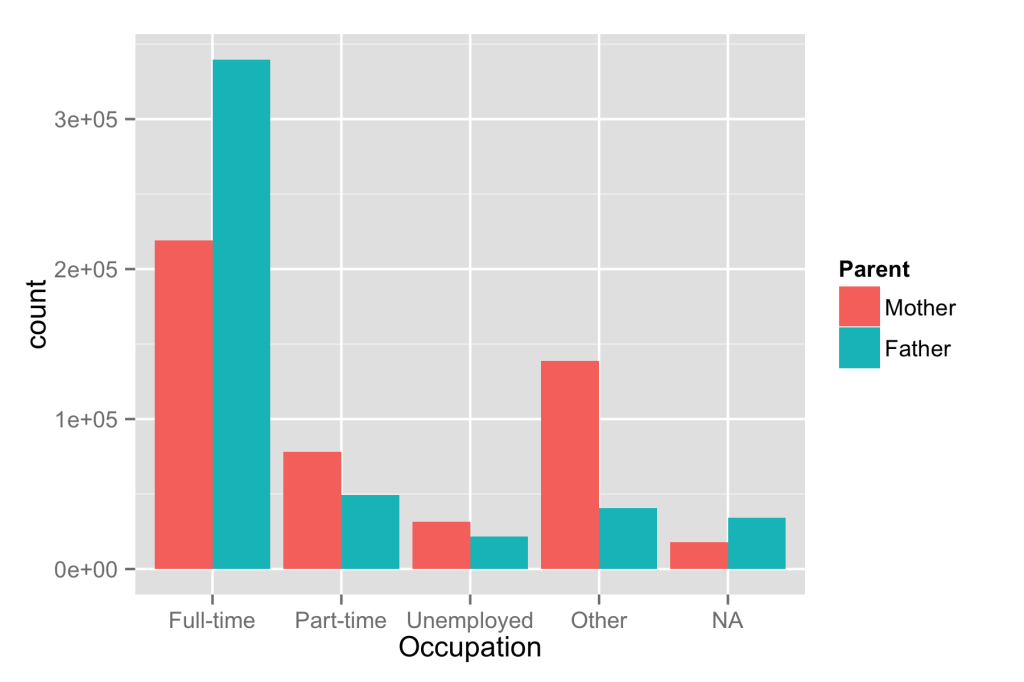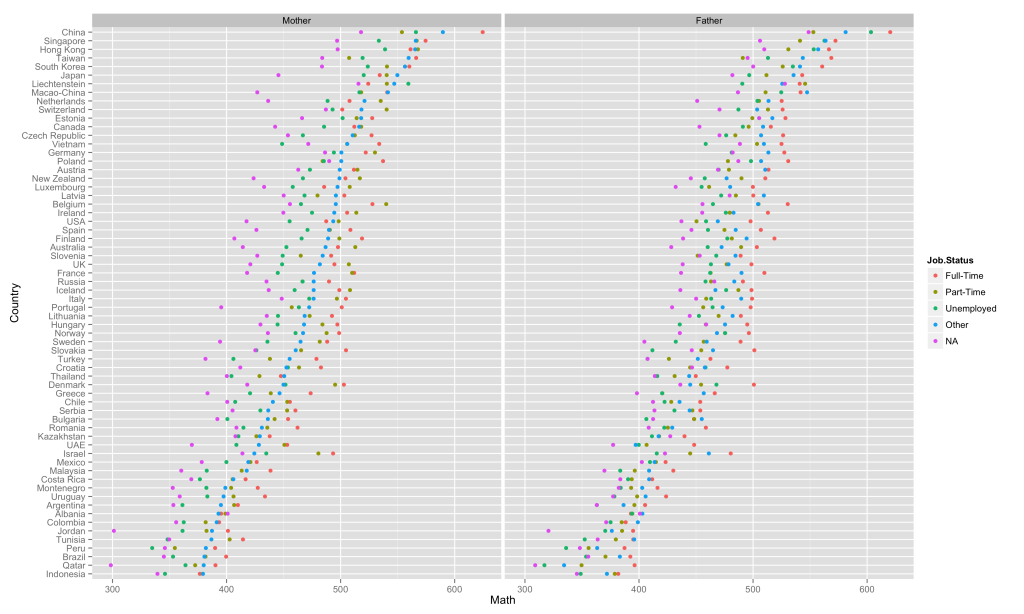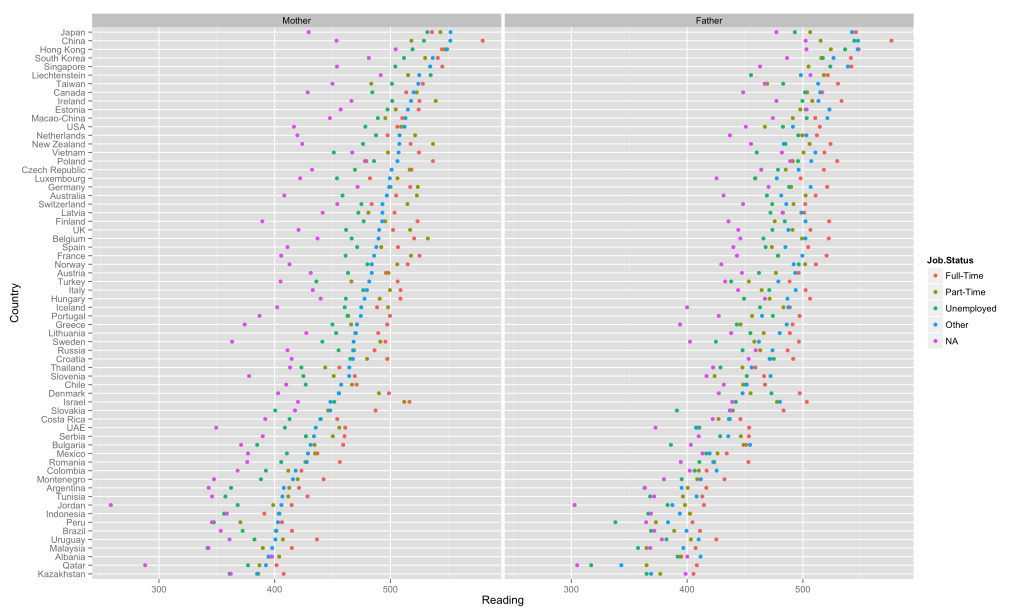PISA 2012 – parent’s occupation
The Programme for International Student Assessment (PISA) is a triennial survey conducted by the OECD to assess the quality of education around the work. The aim of PISA is to measure how well 15 year old students can apply their acquired knowledge in mathematics, science, and reading to real-life situations. In each iteration of the PISA survey, there is one subject that is more heavily emphasized. In 2012, the emphasis was on mathematics. The survey also collects data on hundreds of other variables that assess the student, their psychological views regarding a subject, their home life, and many others. Additionally, school information is collected from a survey completed by the principal and, in some countries, parent’s were given a survey. All 34 OECD members and 31 non-OECD economies around the world participate in the survey. Together these economies account for over 80% of the world’s total GDP.
One of the variables the survey addressed was the occupation of each of the parents. There were five possible categories: “Full-Time”, “Part-Time”, “Not working, but looking for a job”, “Other (e.g. home duties, retired)”, and no response. The distribution of the number of parents who selected each of the categories can be seen in the bar chart. The chart shows that father’s primarily have full-time jobs. However, there are large numbers of mothers who work full-time, part-time, or are stay-at-home moms. With women making up a larger portion of the work-force, it is interesting to look at how the parent’s occupation relates to the student’s performance in mathematics, reading, and science.
The three plots below breakdown the average performance of student’s based on the parent’s occupation. The countries are sorted according to the average score for student’s with a stay-at-home mother. The averages for each parent in each of the work status categories are distinguished by color. As you can see in each of the plots below, students’ with a mother who works part-time or full-time tend outperform those students with a stay-at-home mother. This pattern holds with only a few exceptions. Meanwhile, when the father is employed part-time students tend to have much lower achievement that if the father stayed at home. When the father has a full-time jobs, the student’s have the highest average achievement among the possible work status’ for the father.
The pattern’s described hold across mathematics, reading, and science. While these results are simply descriptive and lurking variables are likely present, they are still insightful and suggest that increasing the proportion of women in the work-force has the potential for incredible economic benefits. We also need more full-time jobs for parents. The OECD estimates in their PISA report that if every child could reach at least a level 2 proficiency in mathematics — a level 2 proficiency means a student can only solve the most basic and obvious tasks — global GDP could increase by as much as $200T. In my opinion, it is imperative that we eliminate barriers that prevent women from participating in the workforce.
R code to make these plots is available on github.









